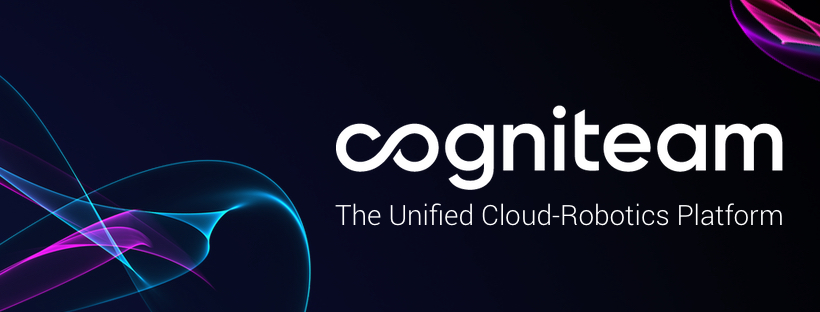Cogniteam operates in the IoT, robotics, and AI industries, delivering platforms to accelerate robotic management, deployment, and control.
Based in Petach Tikva, Israel, and with a US office in Boston, Cogniteam’s flagship product, the Cogniteam Platform, is a cloud-based system that enables the development, management, and control of robots, IoT devices, and fleets.
Cogniteam’s platfrom enables comprehensive remote management, with a customizable dashboard that allows users to monitor in real time live data from anywhere in the world – regardless of how large and complex their fleet is.
Sam Jeans from DailyAI interviewed Dr. Yehuda Elmaliah, the CEO of Cogniteam, to learn more about the company and its cloud platform.
Q: Tell us about Cogniteam and its origins
Dr. Elmaliah: “Cogniteam focuses on managing IoT devices, specifically for autonomous robots. We build a cloud-based platform that enables our clients, the robotic OEMs, operators, and support teams to manage, deploy, and control their robots and fleets.”
“For example, if you take a robotics company today, the time it takes between raising money and deploying a product can take around five or even six years. This lengthy process and long time-to-market can make it very difficult for them to raise money.”
“We provide an off-the-shelf solution to accelerate this process. Companies simply install our software agent on their robot or edge device. Then, they can automatically recognize and control their robots/edge. Through the cloud, they can manage, visualize, monitor, deploy software updates, and manage fleets within one platform. We call it a unified cloud platform for robotics.”
Sam Jeans: “So you help clients manage and monitor their software, algorithms, sensors, etc, and push and pull data to the robots wirelessly through the Cogniteam platform?”
Dr. Elmaliah: “Yes, but the software itself, like the autonomy, is built by the client. We provide a platform that allows them to send and monitor updates to the robots. It’s middleware connected to the cloud and the client. This shortens the company’s time to market.”
Q: How does Cogniteam make building and deploying advanced robots easier?
Dr. Elmaliah: “Robotics is all about integration! If the company that bulids the robot understand that they will deploy quickly”.
“Today’s founders have the advantage of leveraging existing technologies and platforms. By utilizing established systems such as the Robot Operation System (ROS) for navigation and integrating algorithms and Cogniteam’s platform for managing, deploying, and controlling, they can focus on developing the unique aspects of their robots.”
“What used to take about six years can now be achieved in just two years.”
We also discussed how the cost of robotic equipment, such as Light Imaging and Ranging (LIDAR) sensors for scene understanding, has decreased over the years.
This, combined with robot management platforms like Cogniteam’s platform, lowers the bar for developing robotic systems.
Dr. Elmaliah elaborated: “Over the years, sensors have become much more affordable. If you look at a 3D LIDAR from seven years ago, it would have cost around $50 to $60 thousand dollars. Today, you can find a very good 3D LIDAR for $2,000, depending on the resolution, accuracy, and specifications. This is one part of the sensing equation.”
In addition to sensors, edge devices have become far more sophisticated in recent years. They process data locally rather than sending it to the cloud, enabling robots to perform machine-learning tasks at the device level.
Dr. Elmaliah explained: “Part of what we do is decide what to run on the edge or the cloud. With more powerful GPUs available today, you can perform more machine learning tasks on the edge. And you send computationally intensive tasks to more powerful systems in the cloud.”

Q: Is there a robotics project your platform recently helped facilitate?
Dr. Elmaliah: “Yeah, sure. For example, one of our clients has a robot designed to sanitize hotel rooms using UV light. The robot can recognize rooms and turn on the UV lights as needed.”
“This highlights how the company uses our platform to manage the robot remotely. If there’s any issue with the robot, it can be remotely understood and addressed.”
“In fact, I received an email from the company’s CEO who told me, ‘Hey, you saved me $2,500 today.’ Curious, I asked why. He explained that there was a problem with the robot, and instead of sending a technician to the site, he could log into our system remotely to see the live stream data from the robot sensors and understand and fix the problem easily from his laptop.”
Q: How do you think generative AI and large language models (LLMs) will impact the development of AI robotics?
Dr. Elmaliah: “In robotics, the main challenge is not just building the robot but making it autonomous. You want to be able to depend on the robot to perform its mission reliably. Generative AI and LLMs will significantly shorten the time needed to achieve this autonomy.”
Dr. Elmaliah also described some initiatives Cogniteam is involved in, such as the HRI Consortium (Human-Robot Interaction), which aims to develop algorithms and behaviors for robots capable of advanced real-world social interactions.
“Cogniteam is part of an Israeli consortium called Human Robot Interaction. In this consortium, we are working on enabling natural interaction between people and robots. This involves scene understanding, interpreting different events and actions, and fusing information from various sensors, including vision and audio.”
“As part of this effort, we are exploring large language models (LLMs) and comparing their performance to traditional approaches like Prolog for logical reasoning and fact-based understanding. We were pleasantly surprised that the LLMs performed quite well in this context.”
Q: What do you see as the future of AI robotics, and how does Cogniteam fit into that future?
Dr. Elmaliah and I also discussed the future of robotics. I raised the point that generative AI and LLMs were perhaps not what most people thought about when they imagined AI in the early 2000s.
Rather, in the longer-term, AI has been synonymous with robots – particularly humanoid robots.
But how realistic are humanoid robots? And what about their practicality?
Dr. Elmaliah explained: “We see many humanoid robots showcased at events and exhibitions. However, I don’t believe that these will be commercially deployed in practical applications in the near term. It will take at least 15 years to see humanoid robots really deployed in industry.”
“I see the future of robotics as one in which many new companies will enter the field, and there will be a huge demand. The numbers will multiply by at least ten over the next decade. However, in the next 15 years, robots will focus on performing a single mission, such as cherry-picking, forklifting, and similar specialized activities. Later on, we’ll see the emergence of multipurpose robots, like humanoids and unmanned vehicles at commercial scale.”
Dr. Elmaliah and I agreed that the utility of AI robotics lies in specific activities that may be repetitive, dangerous, or physically impossible for humans to achieve.
With cheaper hardware, open-source operating systems, off-the-shelf algorithms, and innovative management platforms like Cogniteam’s platform, robotics is no longer the complex and costly industry it once was.
To learn more about Cogniteam and its services, visit their website here.





